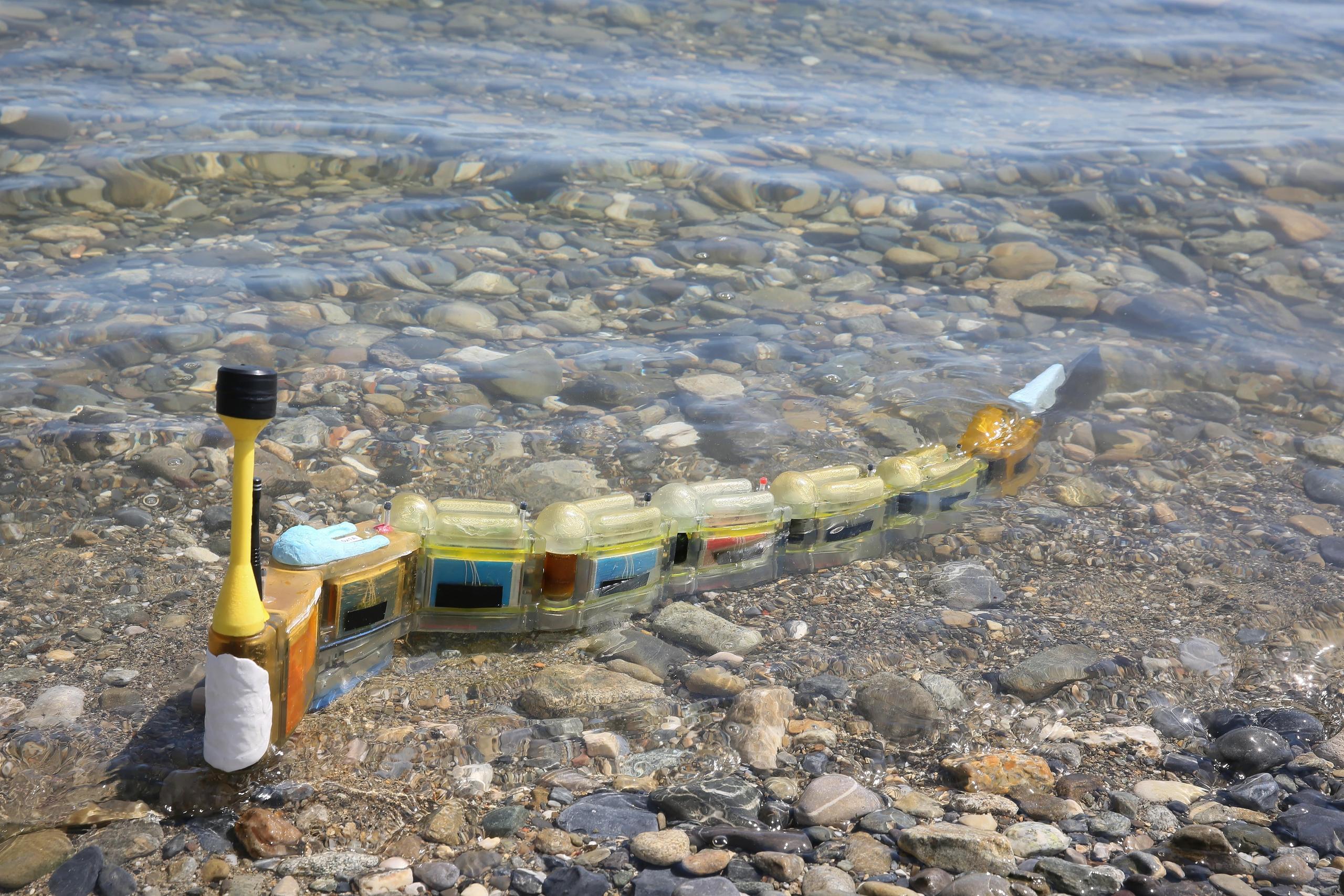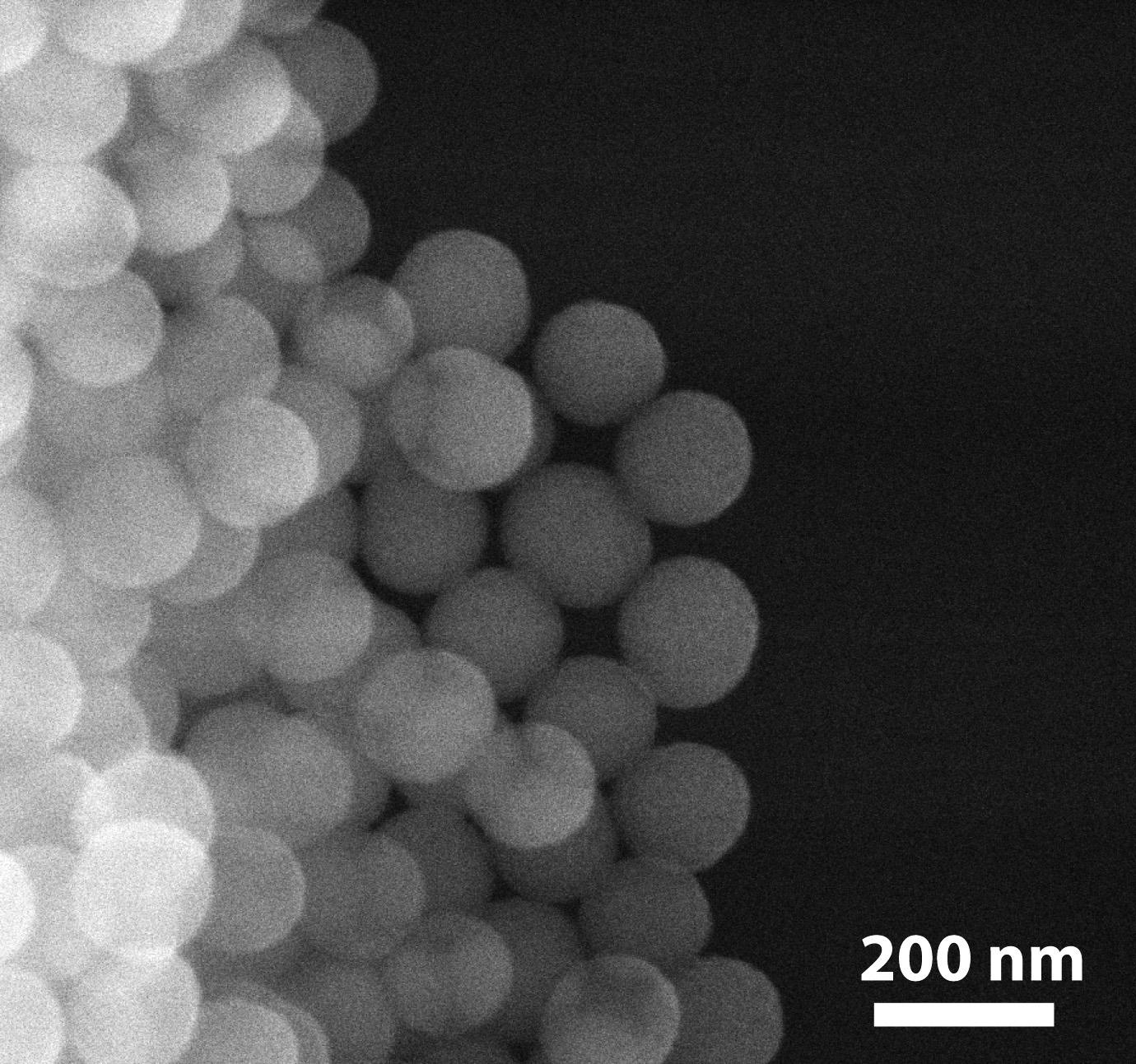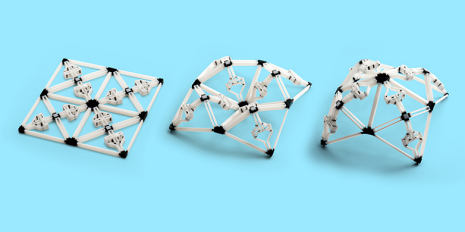A swimming robot to sniff out water pollution

A new bio-inspired robot developed by a Swiss research team can be outfitted with different chemical and biological sensors that allow it to zero in on sources of aquatic contaminants.
The 1.5-metre ‘Envirobot’ closely resembles an eel or water snake, and can easily swim around via remote control, or on its own trajectory thanks to the sensors that direct its path toward potential sources of pollution.
Data from these sensors are transmitted back to the interdisciplinary research team, which is funded by the Swiss Nano-TeraExternal link programme and which involves scientists and engineers from four institutions.
The data are used to generate maps of water conductivity and temperature – variations in which can be associated with pollution. For example, in recent tests conducted in Lake Geneva, the researchers added ordinary salt, which changes the water’s electrical conductivity in a similar way to a pollutant. Sure enough, the Envirobot was able generate a map of these changes.
The researchers hope that in the future, their device will be able to alert them to the presence of real pollutants, like mercury.
Advantages
“There are many advantages to using swimming robots. They can take measurements and send us data in real-time – much faster than if we had measurement stations set up around the lake. And compared with conventional propeller-driven underwater robots, they are less likely to get stuck in algae or branches as they move around. What’s more, they produce less of a wake, so they don’t disperse pollutants as much,” said Auke Ijspeert, head of the Biorobotics Laboratory at the Swiss Federal Institute of Technology (EPFL), in a statement on Tuesday.
The robot’s eel-like shape means that the researchers have been able to develop a modular design with individual segments that can be added or removed for easy transport, or to modify the Envirobot’s length, or even to control its sensory functions. While some segments support the conductivity and temperature sensors, others may contain various biological sensors inside – like bacteria or even small crustaceans – that react to the environment in response to pollutants.
“For example, we developed bacteria that generate light when exposed to very low concentrations of mercury. We can detect those changes using luminometers and then transmit the data in the form of electrical signals,” explained project coordinator Jan Roelof van der Meer, head of the Department of Fundamental Microbiology at the University of Lausanne.
The researchers plan to test out these biological sensors later this summer.

In compliance with the JTI standards
More: SWI swissinfo.ch certified by the Journalism Trust Initiative











You can find an overview of ongoing debates with our journalists here . Please join us!
If you want to start a conversation about a topic raised in this article or want to report factual errors, email us at english@swissinfo.ch.